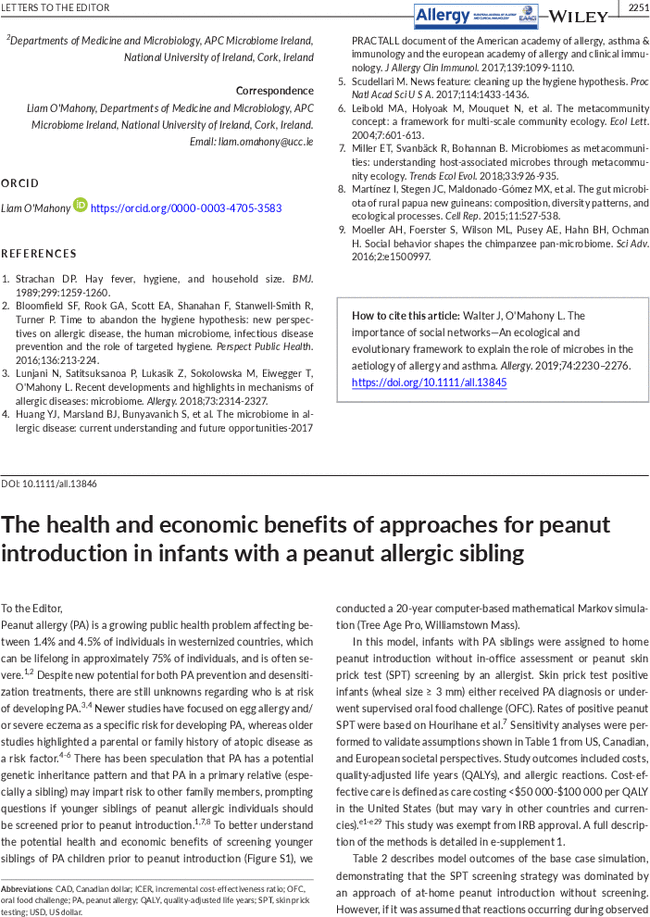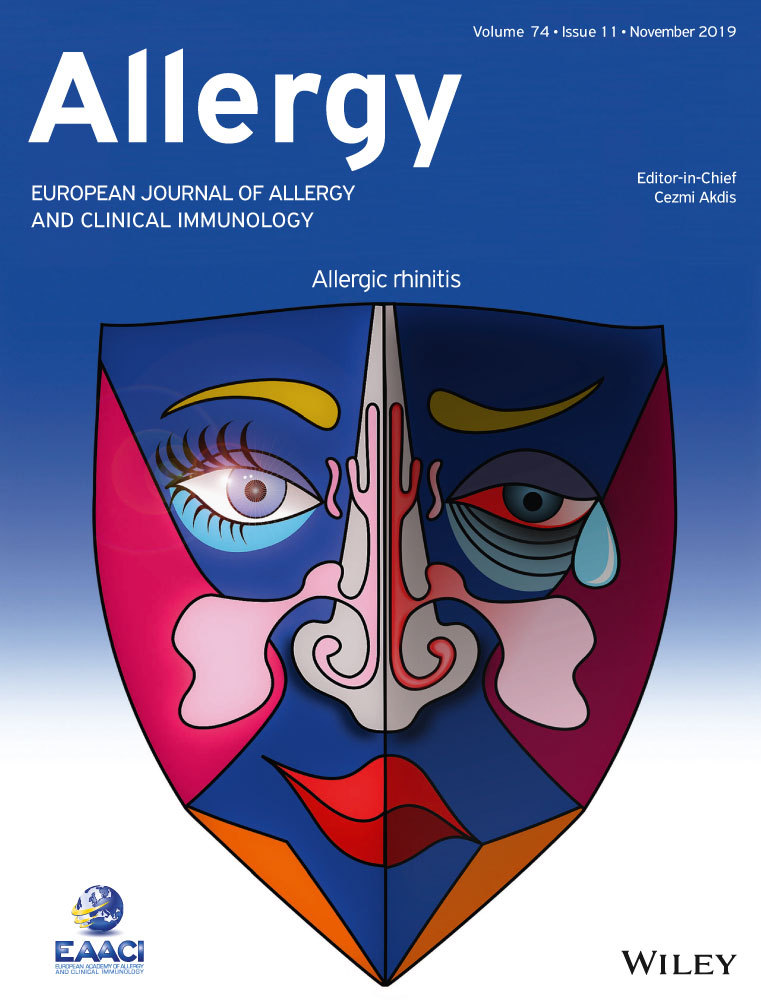The health and economic benefits of approaches for peanut introduction in infants with a peanut allergic sibling
Corresponding Author
Marcus S. Shaker
Section of Allergy and Immunology, Dartmouth-Hitchcock Medical Center, Lebanon, New Hampshire
Dartmouth Geisel School of Medicine, Hanover, New Hampshire
Correspondence
Marcus S. Shaker, Dartmouth-Hitchcock Medical Center, Section of Allergy and Immunology, Dartmouth Geisel School of Medicine, 1 Medical Center Dr, Lebanon, 03756 NH.
Email: [email protected]
Search for more papers by this authorEdward Iglesia
Section of Allergy and Immunology, University of North Carolina Hospitals, Chapel Hill, North Carolina
Search for more papers by this authorMatthew Greenhawt
Section of Allergy and Immunology, School of Medicine, Children’s Hospital Colorado, University of Colorado, Aurora, Colorado
Search for more papers by this authorCorresponding Author
Marcus S. Shaker
Section of Allergy and Immunology, Dartmouth-Hitchcock Medical Center, Lebanon, New Hampshire
Dartmouth Geisel School of Medicine, Hanover, New Hampshire
Correspondence
Marcus S. Shaker, Dartmouth-Hitchcock Medical Center, Section of Allergy and Immunology, Dartmouth Geisel School of Medicine, 1 Medical Center Dr, Lebanon, 03756 NH.
Email: [email protected]
Search for more papers by this authorEdward Iglesia
Section of Allergy and Immunology, University of North Carolina Hospitals, Chapel Hill, North Carolina
Search for more papers by this authorMatthew Greenhawt
Section of Allergy and Immunology, School of Medicine, Children’s Hospital Colorado, University of Colorado, Aurora, Colorado
Search for more papers by this author
Supporting Information
| Filename | Description |
|---|---|
| all13846-sup-0001-FigS1.pdfPDF document, 202.1 KB | |
| all13846-sup-0002-FigS2.docxWord document, 1.2 MB | |
| all13846-sup-0003-Methods.docxWord document, 15.4 KB | |
| all13846-sup-0004-References.docxWord document, 16.6 KB |
Please note: The publisher is not responsible for the content or functionality of any supporting information supplied by the authors. Any queries (other than missing content) should be directed to the corresponding author for the article.
REFERENCES
- 1 MP Oria, VA Stallings eds. Finding a path to safety in food allergy: assessment of the global. burden, causes, prevention, management, and public policy. Washington, DC: National Academies Press. 2016.
- 2Gupta RS, Springston EE, Warrier MR, et al. The prevalence, severity, and distribution of childhood food allergy in the United States. Pediatrics 2011; 128.
- 3Wood RA. Food allergen immunotherapy: Current status and prospects for the future. J Allergy Clin Immunol 2016; 137: 973-982.
- 4Du Toit G, Roberts G, Sayre PH, et al. Randomized trial of peanut consumption in infants at risk for peanut allergy. N Engl J Med 2015; 372: 803-813.
- 5Du Toit G, Roberts G, Sayre PH, et al. Identifying infants at high risk of peanut allergy: the Learning Early About Peanut Allergy (LEAP) screening study. J Allergy Clin Immunol 2013; 131: 135-143.
- 6Greenhawt MJ, Fleischer DM. Primary Prevention of Food Allergy. Curr Allergy Asthma Rep 2017; 17: 26.
- 7Hourihane JO, Dean TP, Warner JO. Peanut allergy in relation to heredity, maternal diet, and other atopic diseases: results of a questionnaire survey, skin prick testing, and food challenges. BMJ 1996; 313: 518-521.
- 8Abrams EM, Chan ES, Sicherer SH. Should younger siblings of peanut allergic children be screened for peanut allergy? J Allergy Clin Immunol Pract 2018; 6: 414-418.




